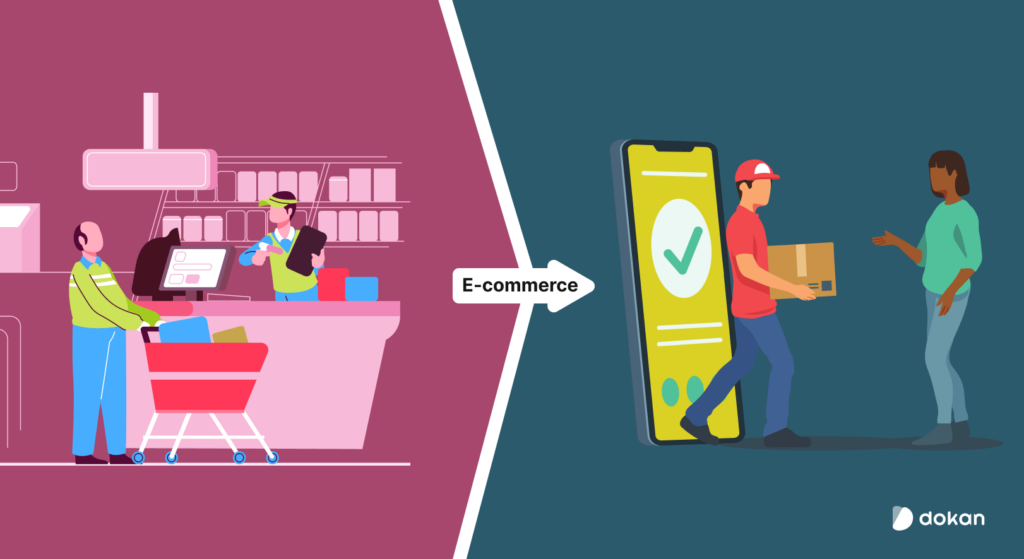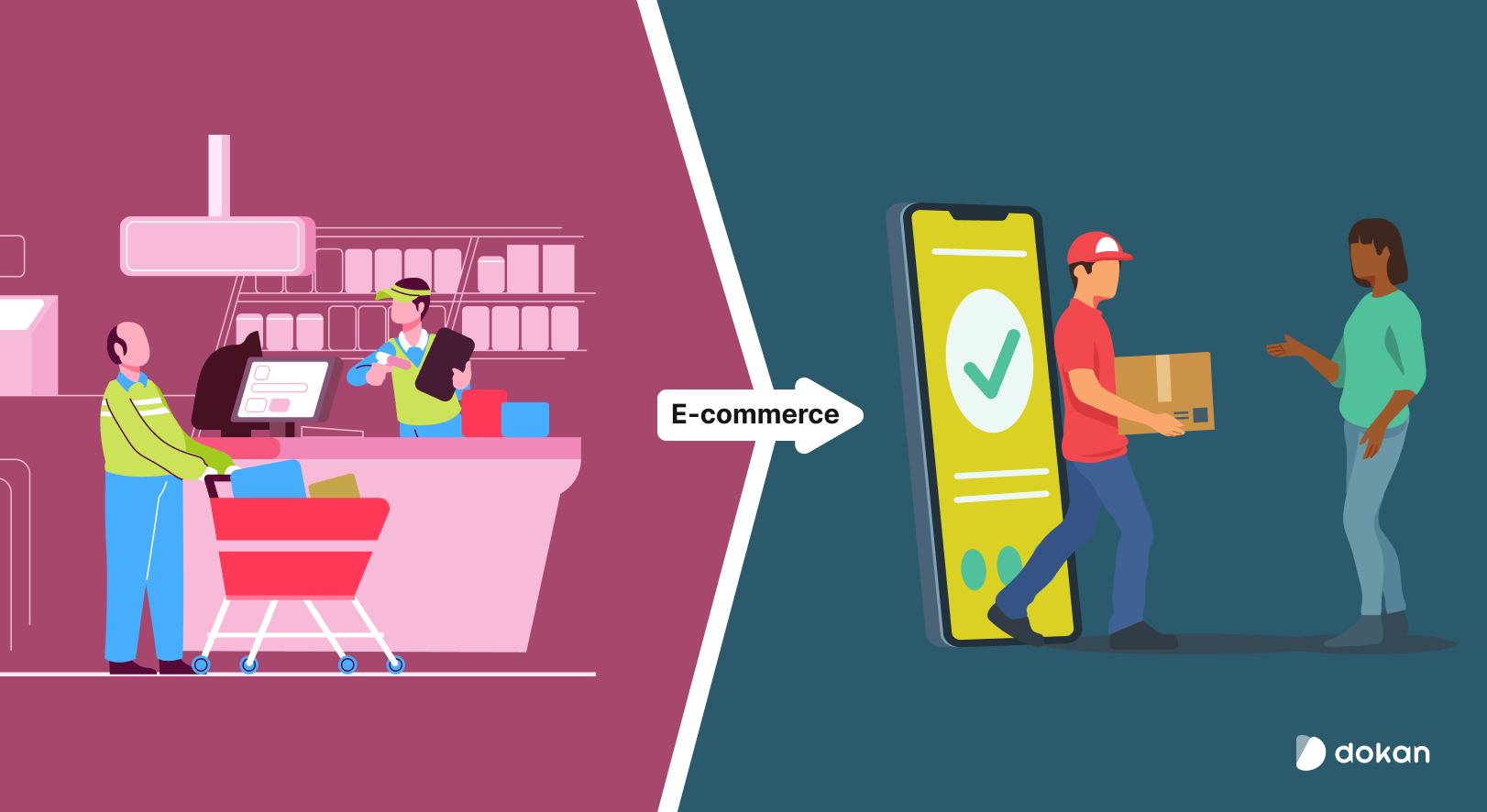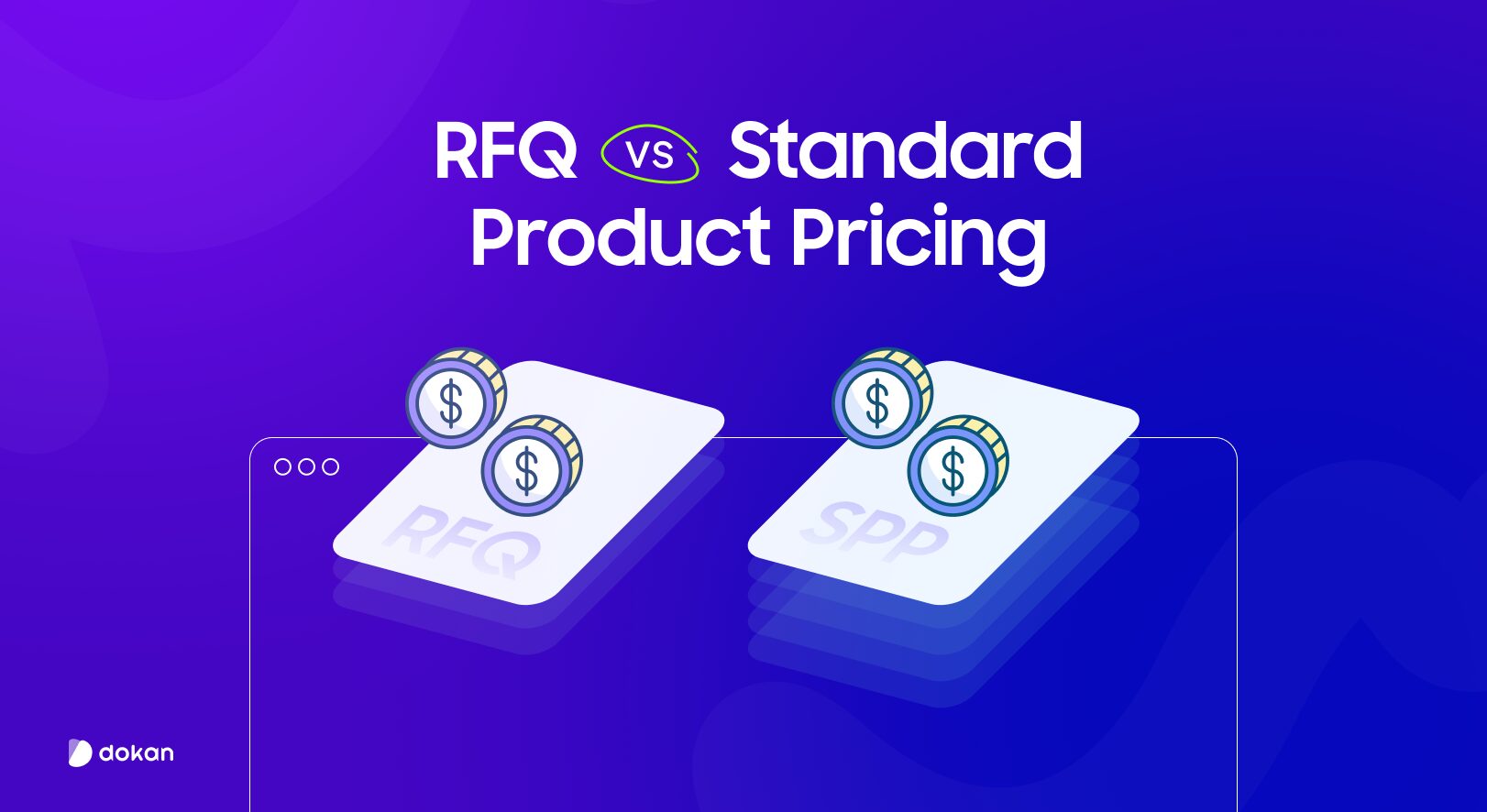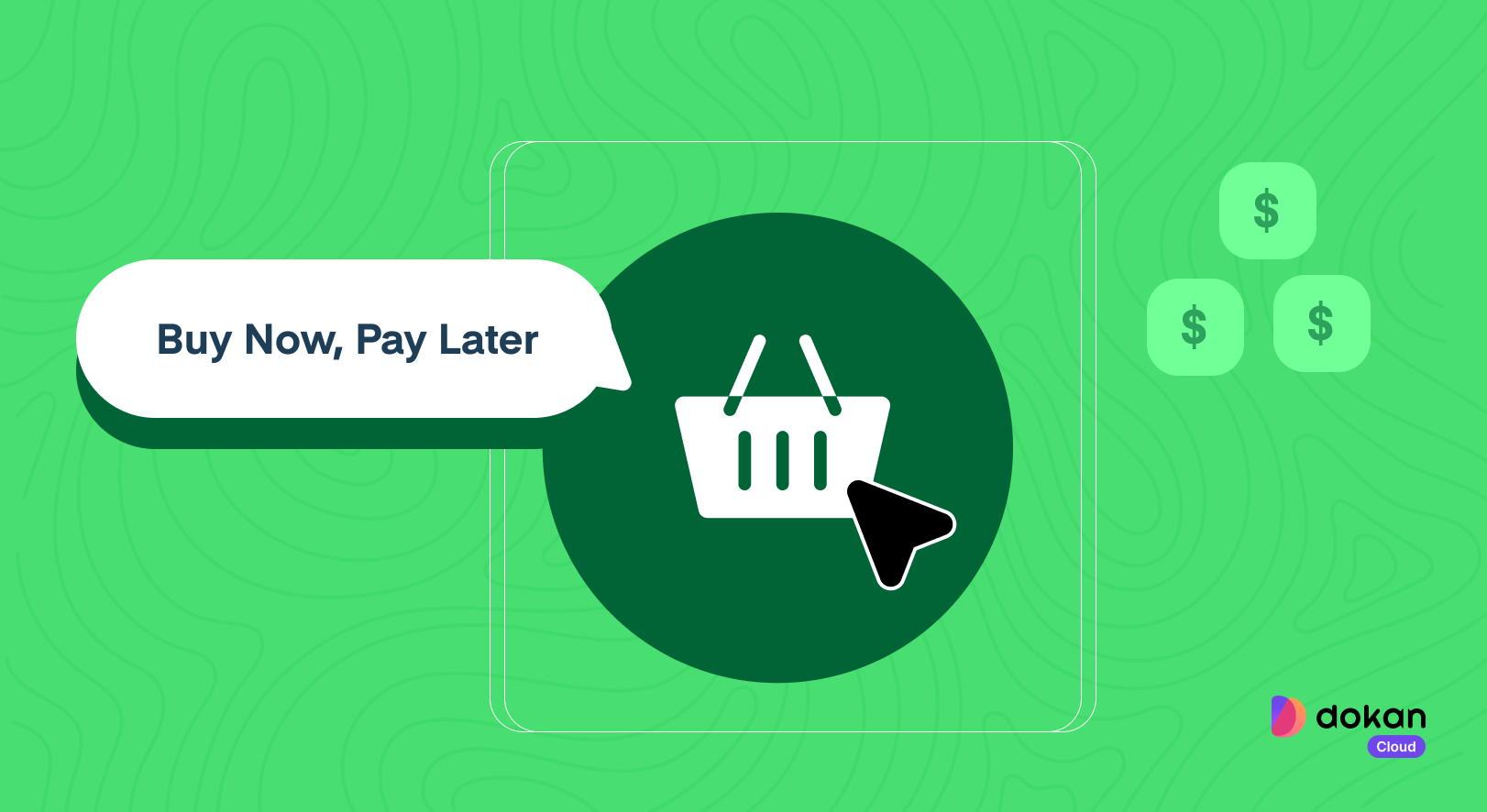The first product sold through an eCommerce site was a CD by the popular band Sting. That was in 1994. And recently, a giant yacht was sold for $168 million from the popular eCommerce platform eBay. This is how eCommerce has changed business globally.
Electronic commerce otherwise known as eCommerce is the procedure of buying and selling goods over the internet.
The way of conducting business has changed drastically since the boom of eCommerce. Product selling, marketing, selling process, transactions, and communication have all changed since marketers have chosen online selling.
People feel more comfortable buying from online stores. That is why there are about 22-24 million eCommerce websites available now and in the year 2022, total sales from eCommerce platforms surpassed 5.68 trillion. Sale is expected to cross 8 trillion by 2026.
We can see that eCommerce has changed the way of doing business. But exactly how? We are going to discuss that today along with consumer behavior and top eCommerce platforms.
We are starting by-
How eCommerce Has Changed Business- Customers’ Perspective

i) Low and Competitive Product Prices
The biggest change eCommerce has brought to the business is, customers can now buy products at a low price. With so many eCommerce sites and neck-and-neck competition, the prices of the products are affected the most.
In order to get ahead of the competition, eCommerce sites keep competitive prices and it benefits the customers.
Moreover, eCommerce site owners don’t need to spend much in setting up their stores. So they can afford to keep the prices low. The global reach of eCommerce sites also helps with low pricing.
ii) More Product Options
This one is very obvious. If you can buy an airplane from an eCommerce store then you can buy anything from there. Now customers don’t need to visit different stores to buy different products.
eCommerce stores keep varieties of products so that customer can buy all their necessities from one place. Also, customers can go through 10 eCommerce sites in 1 hour to find the best deal for themselves.
iii) Personalized Shopping Experience
A personalized shopping experience means people can buy what they want for themselves. eCommerce websites have added this element to their business. Many eCommerce businesses have incorporated AI into their website.
With this feature, we, as a user, can see which furniture will suit our room. An eCommerce website like Lenskart also provides a function of 3D trial function where you can see which structure suits the customers.
iv) Buy Products from Anywhere
Customers can buy products from anywhere in the world. Customers can be sitting in the USA and order products from Germany. That’s how advanced eCommerce has gotten.
With advanced shipping, people are getting products delivered to them from one side of the earth to the other within days. So why would they bother going to a shop and then looking for products?
That is how eCommerce has streamlined global business.
v) Easy to Pay
it is very easy to pay while shopping from eCommerce stores. As customers can order from other countries or locations, they can use many third-party payment gateways (PayPal, Stripe, Skrill, WireCard, etc) to finish their transactions.
Moreover, these payment gateways are super secure so customers don’t need to think about security while paying.
So, you can see how eCommerce has changed business globally. After reading our points, it is up to you to decide whether or not these changes are for good or bad.
How eCommerce Has Changed Business- Entrepreneurs’ Perspective

i) Easy to Start
This is the biggest change eCommerce has made in the world of business. Now anyone from anywhere can start an eCommerce business. They can sell everything from traditional items to unique items as well.
People even sell Airplanes through eCommerce stores now. It has opened the opportunity even for village people to open their own online stores and sell products directly to their customers.
Moreover, creating an eCommerce store is not that hard. All you need is a domain, hosting, and an eCommerce platform. There are many popular eCommerce platforms (which we will discuss later) that will help users create an eCommerce store with ease.
And users need a budget of $50-$5000 to create and launch an eCommerce store.
ii) Easy-to-Target Customers
With eCommerce, targeting customers has become very easy. Social media advertising, Video ads, Google ads, and Cookies help business owners to target specific customers based on locations and preferences.
Marketing is all about keywords and customers’ interests. And thanks to social media, videos, and Google, the availability of data helps eCommerce owners target customers’ interests and produce products based on that.
iii) Data-Driven Decision Making & Customer Retention
This is one of the ways how eCommerce has changed business. Now, eCommerce store owners have data on their hands. They attain this data through social media ads and marketing channels. Then they can analyze those data and take data-driven decisions.
And by taking data-driven decisions, people are spending more, and website owners are able to sell globally and target their preferred customers. Eventually, this leads to more conversion rate.
Not only that, but eCommerce website owners can retain their customers as well. Based on past actions, or the behaviors of the customers on different platforms, online store owners can re-target them.
They can connect through social media, and emails and tell customers about their products. Owners can also send a newsletter and educate customers through blogs, videos, and documentation.
iv) Business Automation
eCommerce has completely changed business operations. The business is 24/7 online and can be run by automation tools. Owners can upload product pictures, product descriptions, titles, and social media takes care of the marketing.
Customers can come and buy the product they like. You don’t need to attend to every customer in the selling process. Everything is automated. You can even integrate chatbots that will do conversations with the customers and help them solve their queries.
Read: How to Write a Business Case to Win Over Clients
v) Easy to Do Marketing and Promotion
As we have said again and again, eCommerce has made marketing and promotion easy.
With all the data it is very easy to take marketing decisions. Owners can use those data to promote their products to their targeted customers in the targeted location.
Also, owners can create promotional materials based on analyzing the data.
vi) Business Monopoly
Although starting an eCommerce site is easy, surviving is difficult. There are a lot of eCommerce sites on the internet, and the space is very competitive.
However, the big brands are selling every product the customers require. They also provide the fastest delivery options, which is tough to do for a startup. Another reason is that more prominent brands spend a significant amount on the digital advertisement of their website with the help of digital marketing tools and techniques.
vii) Work From Anywhere
Last but not least, eCommerce owners can hire employees from anywhere in the world. There are many talented employees around the world. Every business needs marketers and expert sellers to be able to survive in this competitive world.
And with the availability of a huge number of freelancers and technical experts online, eCommerce owners can easily hire them. And the staff can easily work from anywhere.
Anyone can hire to build an online store, manage inventory, write content, do marketing, etc.
How eCommerce Has Changed the Customer’s Behaviours

We read about how eCommerce is changing the world of business. But we also should know how eCommerce is changing the habit of consumers as well. Here’s how-
i) They Expect a More Personalized Shopping Experience
The advancement of eCommerce stores has raised the expectations of customers. Now they want a seamless shopping experience that is personalized for them.
They want to buy products using every device (mobile, laptop, tablet). And people are likely to spend 40% more if they get a personalized shopping experience.
ii) They Treat Shopping as a Social Activity
When people find a great shopping experience from eCommerce stores, they are most likely to share that experience. Also, consumers rely on word of mouth to decide whether or not they want to buy from that eCommerce platform.
95% of shoppers read reviews before buying anything. So, we can clearly see that eCommerce shopping has become a social activity for consumers.
iii) They Have Become their Salespeople
Customers nowadays don’t go to salespeople to ask about the product or company. They read reviews, do their own research, and then decide if they want to buy that product from that company or not.
And these better-informed customers have changed the role of salespeople in an eCommerce business. Before eCommerce, customers relied on salespeople to guide them in making the best purchase. Now customers enter stores (or websites) armed with the information they need to make a purchase.
iv) They Have Greater Access to Goods
With eCommerce, shoppers have access to more products from around the world. New trade agreements and advances in eCommerce technology have opened the door for brands to sell outside their domestic markets and customers are bought in. Global cross-border sales are expected to hit more than $4 trillion by 2027.
But while shoppers can buy products outside of their own country, they still have high expectations from their online shopping experience.
FAQs on How eCommerce Has Changed Business
What are the mistakes in eCommerce business?
Here are the top eCommerce mistakes-
1. Bad customer service
2. Poor Customer Experience.
3. Lack of social proof
4. Complicated checkout process
How can I boost sales on my eCommerce website?
Here’s how you can boost the sale of your eCommerce site-
1. Improve the user experience
2. Optimize product listings
3. Offer promotions and discounts
4. Use social media
5. Use email marketing
6. Use customer reviews
7. Offer multiple payment options
What are the steps to getting started with eCommerce?
Here are the basic steps to get started with eCommerce:
1. Choose your product or service to sell
2. Conduct market research and identify your target audience
3. Choose an eCommerce platform
4. Register a domain name and set up web hosting
5. Design and develop your website
6. Set up payment and shipping options
7. Launch your website and start marketing
8. Monitor and analyze website performance
9. Optimize your website for better sales and customer experience
Top Platforms to Create eCommerce Stores
Here is a list of eCommerce software that will help you create your eCommerce store without any coding-
1. WooCommerce
2. BigCommerce
3. Shopify
4. Squarespace
5. Square Online
6. Ecwid
7. Shift4Shop
8. Wix
9. Weebly
10. Big Cartel
Last Words
So, has eCommerce changed the business for good or bad? Obviously, it has changed the business scenario for the good.
Not only customers but also business owners can reap benefits by starting an eCommerce store. And the pros outweigh the cons. So if you are thinking about starting an eCommerce store, you should definitely go for it.
eCommerce is the future and it will continue to change the business. eCommerce will bring new startups to the market and enhance the entrepreneurship capabilities of the next generation of business leaders.
All of the above points explain that eCommerce has changed the ways, methods, systems, employment, shopping experience, trading, and marketing in the business by using the Internet, social media, search engine, digital marketing, and data.
Subscribe to
Dokan blog
We send weekly newsletters, no spam for sure!







Leave a Reply